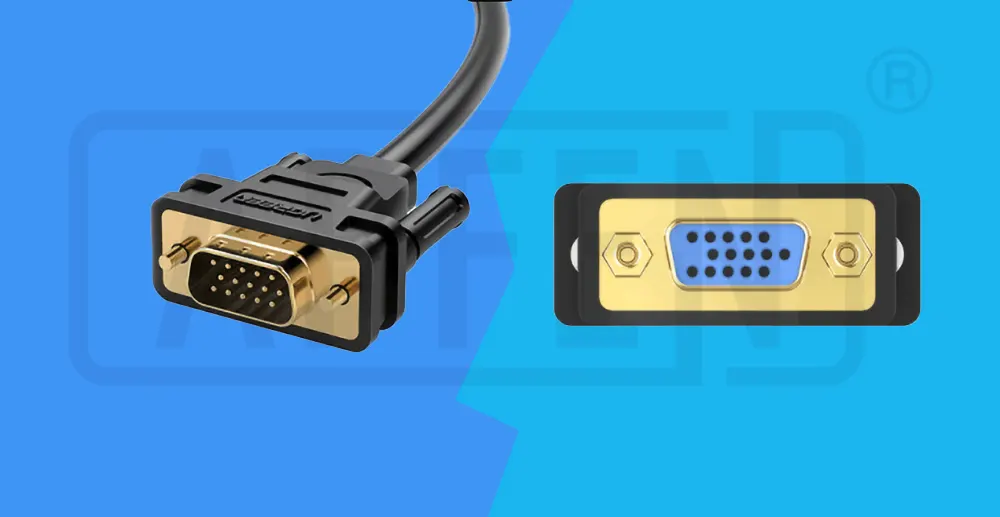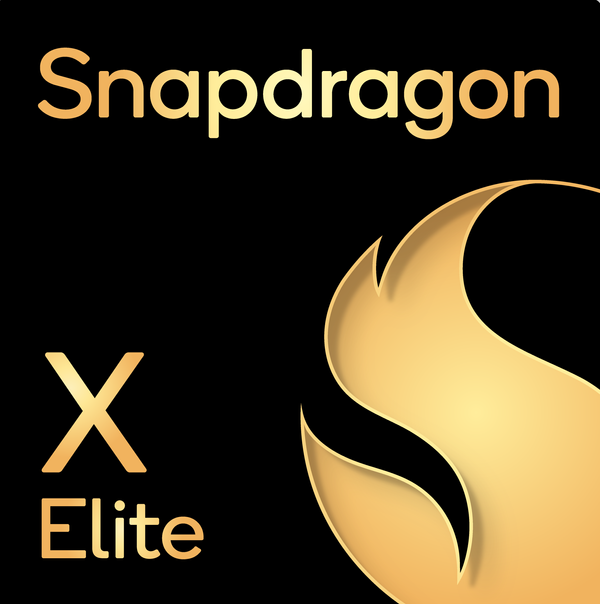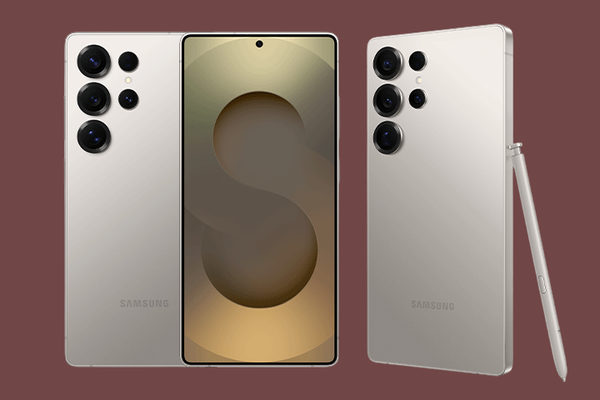Wired Display Technologies: VGA to Thunderbolt 4
The progression from VGA’s analog beginnings to HDMI’s digital transformation and the multifunctional prowess of Thunderbolt 4 highlights the persistent drive for technological advancement and innovation in connectivity standards.

Connectivity standards have played a pivotal role in the evolution of technology. From the early days of analog signals transmitted through VGA (Video Graphics Array) ports to the advent of HDMI (High-Definition Multimedia Interface), and the transformative capabilities of Thunderbolt 4, our devices have undergone an incredible journey. These advancements have redefined data transmission, media playback, and device interconnectivity, offering unparalleled speed, convenience, and performance.
In this article, we’ll explore the history and evolution of HDMI technology from the traditional VGA port, examine how Thunderbolt 4 builds upon these advancements, and compare them alongside DisplayPort—a robust alternative in the world of video connectivity. Let's begin!
Evolution from VGA to HDMI
The journey of video connectivity standards marks a fascinating progression from analog to digital technology. VGA (Video Graphics Array), once a cornerstone of early computing, laid the foundation for transmitting visuals to monitors. However, as demands for higher resolutions, better color fidelity, and integrated audio grew, HDMI (High-Definition Multimedia Interface) stepped in to revolutionize connectivity. This shift not only transformed home entertainment but also paved the way for innovations in multimedia transmission, setting the stage for modern digital displays.
The Era of VGA (Video Graphics Array)
Introduced by IBM in 1987, VGA technology marked a major milestone in video transmission. Designed as an analog standard, VGA became widely adopted for connecting monitors to computers, supporting resolutions of up to 640x480 pixels. VGA relied on separate pins to transmit red, green, and blue signals along with sync signals, which limited its capabilities in delivering higher resolution video.
However, VGA ports had their shortcomings:
- Limited resolution and color depth.
- Analog signals prone to degradation over longer cables.
- Lack of audio transmission capabilities.
Despite these limitations, VGA remained a dominant standard for decades, serving as the backbone of video connectivity in early computing systems.
The HDMI (High-Definition Multimedia Interface)
As technology advanced, the demand for better video quality and integrated audio capabilities grew. Enter HDMI in 2002—a digital interface developed to address these limitations. HDMI was a collaborative effort by major industry players, including Sony, Philips, and Toshiba, and it quickly gained popularity.
Key features of HDMI included:
- Digital signal transmission for higher-quality visuals.
- Support for resolutions up to 4K and beyond in later versions.
- Integrated audio capabilities, removing the need for separate audio cables.
- Backward compatibility with DVI (Digital Visual Interface).
HDMI revolutionised home entertainment systems, becoming the standard for TVs, projectors, gaming consoles, and Blu-ray players. With advancements like HDMI ARC (Audio Return Channel) and eARC (enhanced ARC), it improved audio handling, making it ideal for immersive sound experiences.

Thunderbolt 4: HDMI’s Successor in Performance
Thunderbolt 4 takes connectivity to an entirely new level, building on HDMI’s legacy while integrating features that cater to modern computing needs. Unlike HDMI, Thunderbolt 4 is not confined to video and audio transmission—it’s a versatile standard capable of data transfer, power delivery, and peripheral connection, all through a single USB-C port.
How Thunderbolt 4 Outshines HDMI
- Data Transfer Speeds: Thunderbolt 4 offers speeds of up to 40 Gbps, while HDMI is limited to video and audio transmission.
- Daisy-Chaining: Thunderbolt 4 supports up to six devices in a daisy-chain configuration, whereas HDMI only connects a single display at a time.
- Display Support: Thunderbolt 4 enables dual 4K or single 8K display setups, surpassing HDMI’s capabilities for high-resolution setups.
- Power Delivery: Thunderbolt 4 provides up to 100W of power delivery, charging laptops and peripherals—a feature HDMI lacks.
- Interconnectivity: Thunderbolt 4’s backward compatibility with USB standards and versatility in connecting storage devices, eGPUs, and docking stations make it far superior.
Comparing VGA, HDMI, and Thunderbolt 4
To understand these technologies better, here’s a detailed comparison:
| Feature | VGA | HDMI | Thunderbolt 4 |
|---|---|---|---|
| Signal Type | Analog | Digital | Digital |
| Maximum Resolution | Up to 640x480 pixels | Up to 4K/8K (HDMI 2.1) | Dual 4K or single 8K |
| Audio Transmission | Not supported | Integrated audio | Integrated audio and multi-purpose |
| Data Transfer Speed | Not applicable | Limited to video/audio | Up to 40 Gbps |
| Daisy-Chaining | Not supported | Not supported | Up to 6 devices |
| Power Delivery | Not supported | Not supported | Up to 100W |
| Connector Type | VGA 15-pin D-sub | HDMI Type-A/B | USB-C |
| Use Case | Early monitors | Home entertainment systems | Computing peripherals, displays, and storage |
DisplayPort: An Alternative to HDMI and Thunderbolt
DisplayPort is another contender in the connectivity race, originally developed by VESA (Video Electronics Standards Association) in 2006. It shares similarities with HDMI but offers unique advantages for specific applications.
Key Features of DisplayPort
- Support for resolutions up to 8K and beyond.
- Higher refresh rates, making it ideal for gaming and professional monitors.
- Multi-stream transport (MST) for connecting multiple monitors.
- Backward compatibility with VGA, HDMI, and DVI using adapters.
- Support for adaptive sync technologies like AMD FreeSync and NVIDIA G-Sync.
DisplayPort vs. HDMI
While HDMI is prevalent in consumer electronics, DisplayPort has carved a niche in the professional and gaming markets. Its superior refresh rates and MST capabilities make it a preferred choice for multi-monitor setups.
DisplayPort vs. Thunderbolt 4
DisplayPort focuses exclusively on video and audio transmission, while Thunderbolt 4 excels in multi-purpose connectivity. Thunderbolt 4 incorporates DisplayPort technology as part of its protocol, making it a more versatile choice.
Thunderbolt 4: A Future-Proof Connectivity Standard
Thunderbolt 4 represents the pinnacle of modern connectivity. As technology evolves, Thunderbolt 4’s capabilities position it as the ideal standard for professionals, gamers, and content creators. With its integration of video, audio, data, and power delivery, it surpasses traditional interfaces like VGA, HDMI, and even DisplayPort.
While HDMI and DisplayPort remain relevant for specific use cases, Thunderbolt 4’s versatility ensures its dominance in ecosystems where speed, simplicity, and performance matter most.
Conclusion
The evolution of connectivity standards, from the analog days of VGA to the digital revolution of HDMI and the multifaceted capabilities of Thunderbolt 4, demonstrates the relentless progress in technology. VGA laid the groundwork for video transmission, but it was HDMI that redefined the consumer experience with high-resolution visuals, integrated audio, and ease of use. DisplayPort further expanded possibilities with higher refresh rates and multi-monitor setups, making it a favorite in professional and gaming environments.
However, Thunderbolt 4 has emerged as the pinnacle of connectivity, seamlessly blending video, audio, data transfer, and power delivery into a single, versatile interface. Its unmatched speed, daisy-chaining capabilities, and future-proof design ensure its dominance in the tech landscape for years to come.
As we continue to demand more from our devices—whether for gaming, productivity, or content creation—choosing the right connectivity standard becomes crucial. Each option has its strengths, but Thunderbolt 4 leads the way in offering a unified, powerful solution that meets the needs of modern technology users. It is not just a standard; it’s a gateway to unlocking unparalleled possibilities in an interconnected world.




